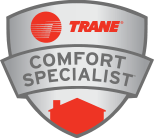What if the heart of your Salt Lake City home’s heating system – the furnace – stops working? The warm air that used to flow from your vents has been replaced by a chilly draft. It isn’t time to panic, but it is time to take action. Before you do anything, determine why the furnace stopped working. It may be something as simple as a tripped circuit breaker in your electrical panel. Check the circuit breakers first.
The pilot light in your furnace may have blown out. It can be re-lit if you follow the directions in your furnace owner’s manual. You can find answers on how to re-light a pilot light on the Internet, too.
If the shutdown has not been caused by an electrical or pilot light failure, there is still no need to panic. But another obvious question is: did you pay your last gas bill? Maybe you had a shutoff notice and either ignored it or forgot about it.
Now that you are convinced that the furnace has pooped out, here are some things you should do. First, find the name of a qualified heating and cooling professional. If you already use a heating contractor, contact them and schedule a service call.
While you are waiting for help to arrive, ensure that everyone is safe and accounted for. Make sure pets are nearby and protected from the cold, too. What you don’t want to do is use any appliance to keep you warm that is not designed to keep you warm, like a stove. If you have electric space heaters or propane heaters, carefully locate them in a well vented room (windows open a bit or portable fans circulating air). You don’t want any build-up of gases from fossil burning appliances, gases which could contain deadly carbon monoxide.
Huddle up everyone into a room and break out lots of blankets. You may even want to make an “adventure” of this – find a movie to watch and pop up a bunch of popcorn. If your waiting time is more than 24 hours, you might want to call up a friend or relative and make arrangements to spend the night with them.
The main thing to remember is not to panic. Most qualified heating contractors, knowing the circumstances, will send out a repair person in a matter of minutes or within one or two hours. Just remember to avoid keeping warm by using unvented heating devices.


